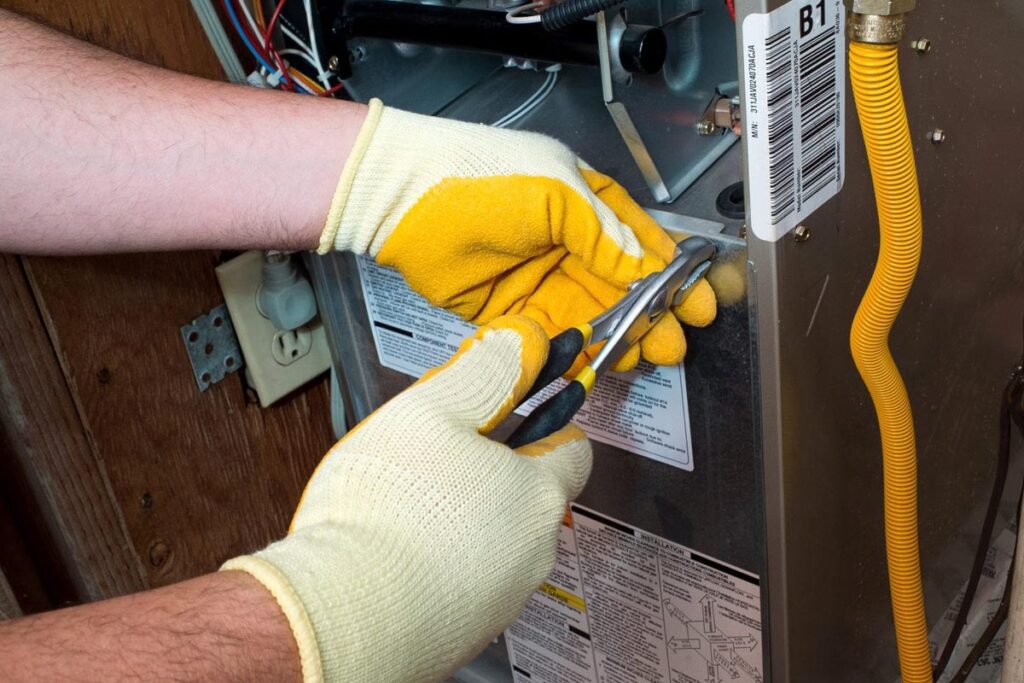
- Furnace maintenance should be scheduled annually to ensure efficiency and safety.
- Ignoring service can lead to costly furnace repair and higher energy bills.
- A faulty flame sensor or cracked heat exchanger can pose serious safety risks.
- Schedule a tune-up before winter to prevent breakdowns and ensure reliable heating.
When winter temperatures drop, your furnace becomes the unsung hero of your home, working hard to keep your family warm and comfortable. But just like any hardworking machine, it needs regular care to perform efficiently. The question is: how often should you schedule furnace maintenance to keep everything running smoothly?
The short answer is at least once a year. But depending on factors like usage, age, and past repairs, your furnace may require more frequent attention. Neglecting routine service can lead to costly furnace repair, decreased efficiency, and even safety risks. Let’s break down what proper maintenance involves and why it’s essential for the longevity of your system.
Why Annual Furnace Maintenance Matters
Scheduling professional furnace maintenance at least once per year—ideally in the fall before peak heating season—assures your system is ready when you need it most. Here’s why an annual tune-up is non-negotiable:
- Improved Efficiency – A well-maintained furnace runs more efficiently, using less energy to heat your home. This means lower utility bills and a reduced carbon footprint.
- Fewer Breakdowns – Regular inspections catch minor issues before they turn into expensive furnace repair needs. A small fix today can prevent a costly emergency call later.
- Longer Lifespan – Just like getting an oil change for your car, annual service extends the life of your furnace, helping you get the most out of your investment.
- Better Air Quality – A clean furnace means cleaner air circulating through your home, reducing dust, allergens, and pollutants.
- Safety First – Furnaces burn fuel to create heat, and if something goes wrong—such as a cracked heat exchanger—it can lead to carbon monoxide leaks. Routine maintenance helps prevent safety hazards like gas leaks or fires.
Signs Your Furnace Needs More Than Just Routine Service
While yearly maintenance is standard, certain warning signs indicate your furnace might need extra attention sooner. Keep an eye out for these red flags:
1. Unusual Noises
A well-functioning furnace should run relatively quietly. If you hear banging, rattling, or high-pitched squealing, it could signal a loose or worn-out part. Ignoring these sounds might lead to more serious furnace repair needs down the line.
2. Short Cycling
If your furnace turns on and off frequently without fully heating your home, it could be due to a dirty air filter, a malfunctioning flame sensor, or improper airflow. A technician can diagnose the issue and restore proper function.
3. Rising Energy Bills
A sudden spike in your heating costs without a corresponding temperature drop likely means your furnace is working harder than it should. Poor maintenance, clogged filters, or worn-out parts can all contribute to inefficiency.
4. Yellow or Flickering Flame
Your furnace’s burner flame should always burn blue. A yellow or flickering flame may indicate improper combustion, which can lead to carbon monoxide leaks. This is a serious issue that requires immediate professional attention.
5. Cold Spots in Your Home
Are some rooms significantly colder than others? Uneven heating could be a sign of ductwork issues, thermostat problems, or a struggling furnace.
6. Strange Odors
A musty, burning, or rotten egg smell coming from your furnace is never a good sign. A persistent burning smell might indicate electrical problems, while a sulfur-like odor could mean a gas leak. If you notice unusual odors, turn off your furnace and call a professional right away.
Key Components Checked During a Furnace Tune-Up
During professional furnace maintenance, a technician will inspect and service crucial components to ensure everything is operating safely and efficiently. Here’s what a typical tune-up includes:
- Checking the flame sensor – This small but essential part detects whether the burner flame is lit. If it’s dirty or faulty, your furnace may shut down unexpectedly.
- Inspecting for a cracked heat exchanger – A cracked heat exchanger is a serious safety hazard, as it can allow carbon monoxide to leak into your home. Technicians will check for damage and recommend repairs if necessary.
- Cleaning or replacing air filters – A dirty air filter restricts airflow, making your furnace work harder than it should.
- Lubricating moving parts – Proper lubrication reduces wear and tear on components, extending their lifespan.
- Testing thermostat calibration – A misaligned thermostat can cause your furnace to run inefficiently, leading to inconsistent temperatures.
- Checking electrical connections – Loose or corroded connections can cause system failures or fire hazards.
- Inspecting and cleaning burners – Dirty burners can affect efficiency and combustion, leading to higher energy costs.
If you missed your fall tune-up, it’s never too late. Even mid-season maintenance can improve efficiency, prevent breakdowns, and extend your furnace’s lifespan.
Schedule Your Furnace Maintenance Today
Don’t wait for a breakdown to remind you that your furnace needs attention. Routine furnace maintenance keeps your system running efficiently, prevents unexpected furnace repair costs, and ensures your home stays warm all winter long.
If your furnace is showing signs of trouble or it’s been more than a year since your last tune-up, schedule a professional inspection today. The experts at CJS Heating and Air are here to help ensuring your home stays comfortable and safe. Book your appointment today!





